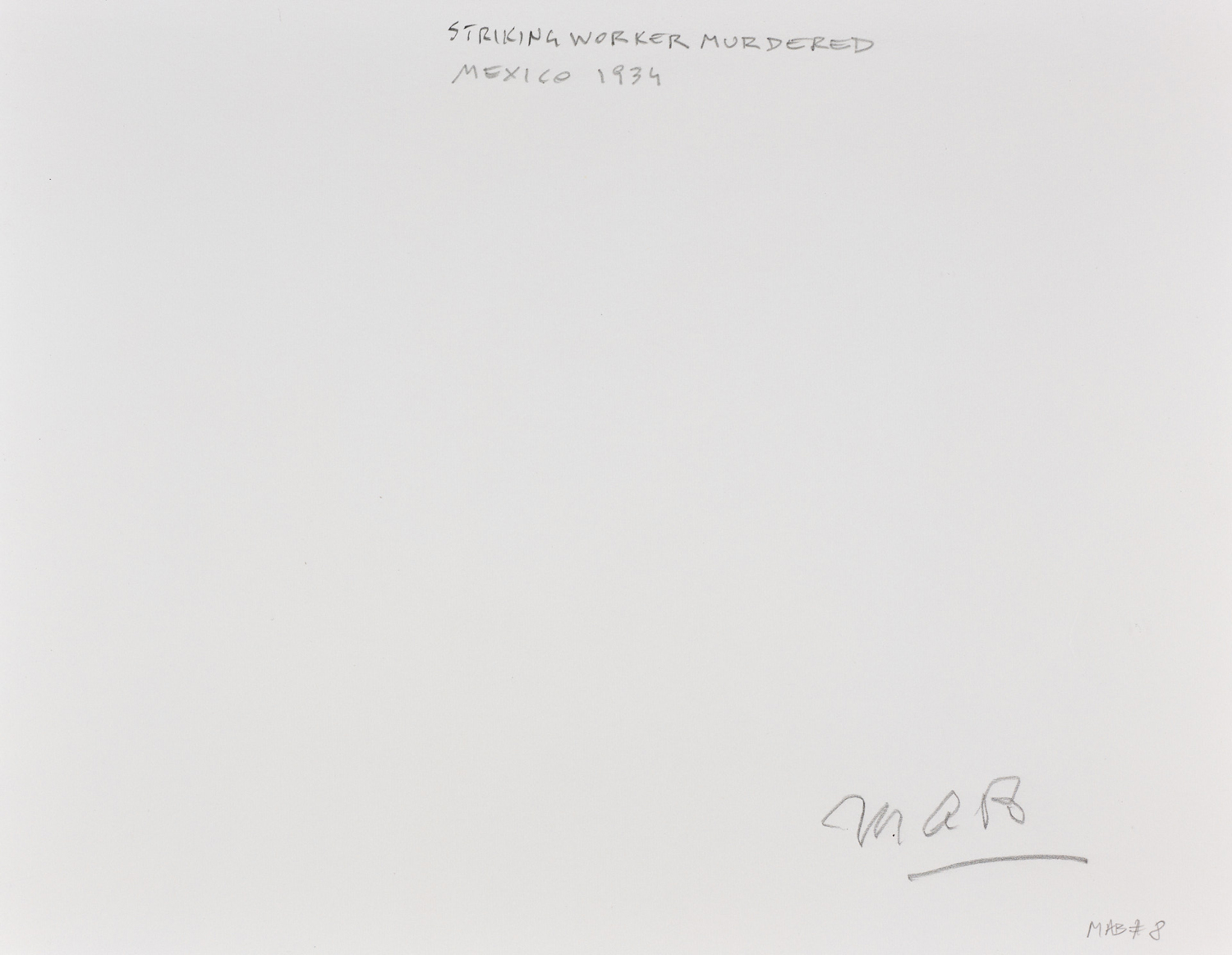"Striking Worker Murdered, Mexico"
gelatin silver print
signed with initials, titled, dated (pencil) on verso
Manuel Álvarez Bravo was born in Mexico City in 1902. In order to contribute to the family income, he left school at the age of twelve and worked in a textile factory. Both his grandfather and his father were amateur photographers. This gave Bravo early contact with photography, which he taught himself by experimenting with different techniques. His ethics as a photographer were particularly influenced by his role model, the German-Mexican photographer Hugo Brehme.1
The workers' strike in Mexico City in 1934, which resulted in deaths, was part of a broader labor unrest throughout the country. The labour movement was split into several factions at the time, including the dominant Confederación Regional Obrera Mexicana (CROM) and newer, more radical organizations. President Lázaro Cárdenas, who took office in 1934, played a key role in uniting the unions into the Confederación de Trabajadores de México (CTM), which had a significant impact on labor policy. The strike in Mexico City, which was often linked to tensions between industrial workers, the government and employers, took place against a backdrop of economic hardship and social inequality exacerbated by the Great Depression. The movement was characterized by violent clashes between workers and authorities, especially when workers demanded better wages and working conditions. These tensions led to numerous strikes, protests and sometimes deaths, especially among the working classes who worked in industry and agriculture.2
This period of labor conflict also coincided with the larger worldwide wave of labor strikes in the early 1930s, such as the US textile strike of 1934, which also resulted in violence and loss of life.
(Christoph Fuchs, 2024)
Notes
1
wikipedia, de.wikipedia.org (accessed 18.11.2024)
2
Encyclopedia, Mexican Labor Confederations, Encyclopedia.com (accessed 18.11.2024)

